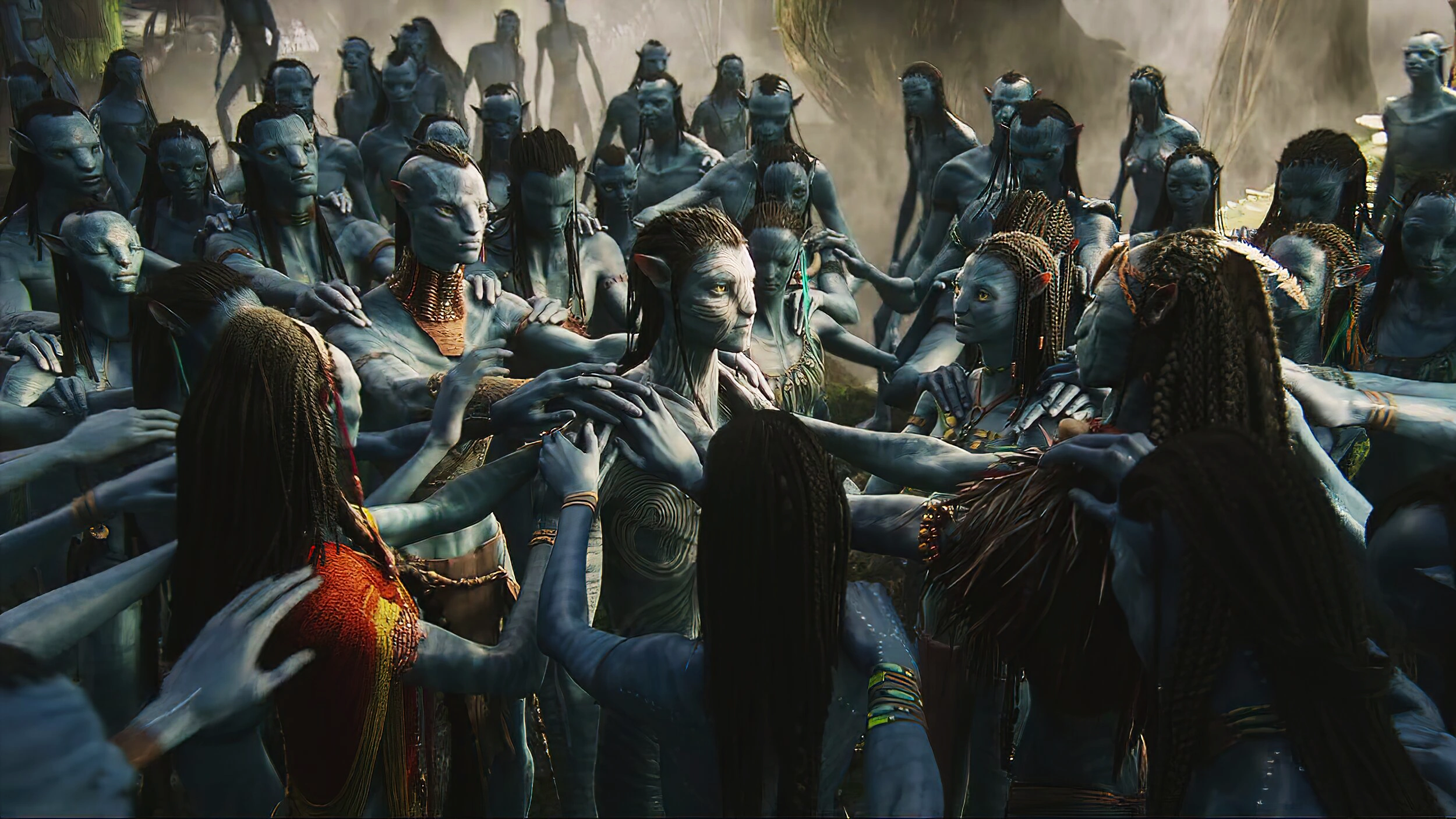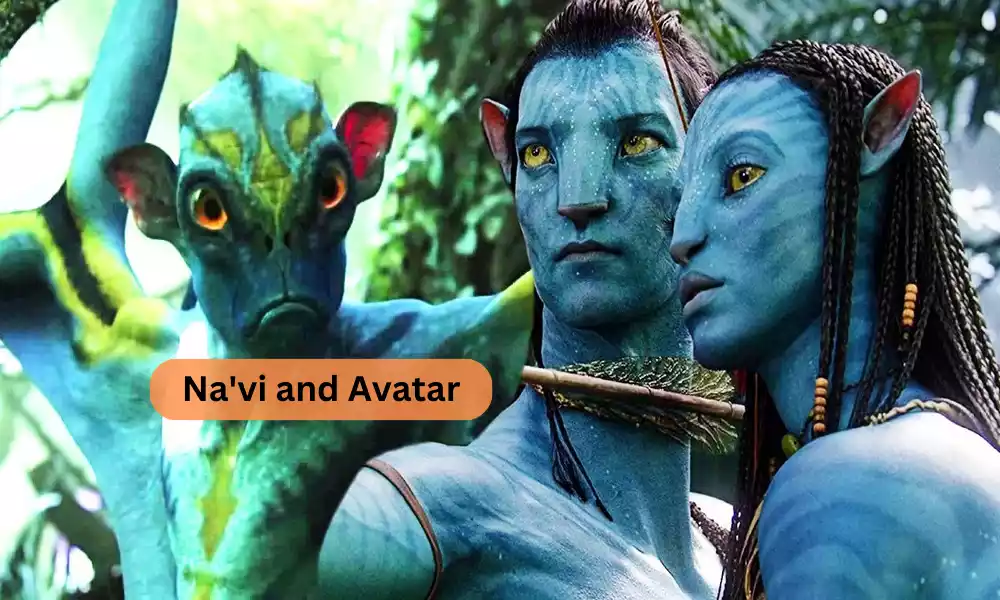Na’vi and Avatar: In James Cameron’s visionary 2009 film “Avatar,” the lush and mysterious world of Pandora is introduced, inhabited by the tall, blue-skinned indigenous beings known as the Na’vi. These natives live in harmony with their environment, deeply connected both spiritually and biologically to the world around them. In stark contrast, the Avatars are genetically engineered hybrids, combining human and Na’vi DNA.
These entities are designed to be remotely operated by humans, allowing them to explore and interact with Pandora’s environment and its inhabitants. While Avatars bear a strong resemblance to the Na’vi, they represent the intersection of two distinct worlds: the technological ambitions of humans and the natural essence of Pandora.
What is Na’vi?
The Na’vi are the indigenous humanoid inhabitants of the fictional exoplanetary moon, Pandora, in James Cameron’s 2009 science fiction film, “Avatar.”

Here’s a brief overview of the Na’vi:
- Physical Appearance:
- Tall, with an average height around 10 feet.
- Blue-skinned with bioluminescent markings.
- Large yellow eyes, a long tail, and slightly pointed ears.
- Culture & Spirituality:
- The Na’vi have a deep spiritual connection to their environment, particularly the sacred “Tree of Souls.”
- Their culture reveres nature, and they live in harmony with their surroundings.
- They have a unique biological connection to other living creatures on Pandora through a neural bond, allowing them to “link” with certain animals and plants.
- Habitat:
- They primarily inhabit the dense forests of Pandora, often residing in massive trees, like the Hometree of the Omaticaya clan which was prominently featured in the film.
- Language:
- The Na’vi communicate using their own language, which was specifically developed for the film by linguist Dr. Paul Frommer. It’s a fully functional language, called the Na’vi language or Na’vian.
- Lifestyle:
- They are skilled hunters and gatherers, utilizing the fauna and flora of Pandora for sustenance, tools, and other necessities.
- The Na’vi use banshees, dragon-like creatures, for transportation and hunting, forming a bond with them through their unique neural connection.
Their deep bond with nature and their environment stands in contrast to the human invaders who seek to exploit Pandora’s resources, setting up the central conflict of the “Avatar” film.
What is Avatar?
In the context of James Cameron’s 2009 film “Avatar,” an “avatar” refers to a genetically engineered body that is a hybrid of human and Na’vi DNA.

Here’s a detailed overview of the concept:
- Purpose:
- Avatars were created by human scientists to facilitate interaction and exploration on the moon of Pandora. Given Pandora’s atmosphere is toxic to humans, avatars allow for safe navigation and communication with the indigenous Na’vi without requiring life support.
- Operation:
- Avatars are remotely operated by a human “driver.” The human operator is linked to the avatar body through advanced technology, allowing them to control the avatar as though it were their own body.
- When in use, the human’s consciousness is transferred to the avatar, and their original human body remains in a dormant state.
- Appearance & Abilities:
- While avatars resemble the Na’vi in physical appearance, they can be differentiated by various features, including slight differences in facial structure.
- Avatars possess the unique Na’vi ability to form neural connections with certain creatures and elements of Pandora.
- Limitations:
- An avatar’s life and consciousness are tied to its human operator. If the link is broken, the avatar becomes dormant.
- Although avatars can sustain injury like any organic being, any harm to the avatar body does not physically harm the human operator.
- Significance in the Film:
- The use of avatars is central to the film’s plot. The protagonist, Jake Sully, operates an avatar and, through it, becomes deeply integrated with the Na’vi, leading to internal and external conflicts as the story unfolds.
The concept of the “avatar” in the film touches on themes of identity, colonialism, and the intersection of technology and nature.
Comparison Table of Na’vi and Avatar
Here’s a comparison table between the Na’vi and Avatar based on different attributes:
| Attribute | Na’vi | Avatar |
|---|---|---|
| Origin | Indigenous inhabitants of Pandora for countless generations. | Genetically engineered by human scientists. |
| Physical Appearance | – Blue skin with bioluminescent markings.
– Large yellow eyes. – Long tail. – Average height around 10 feet. |
Resemble Na’vi, but may have subtle differences due to human DNA. |
| Connection to Pandora | Deep spiritual and biological connection to all of Pandora. | Can form biological connections like the Na’vi, but lack the inherent cultural knowledge. |
| Purpose | Natural inhabitants living in harmony with Pandora’s ecosystem. | Created for human exploration, interaction, and diplomacy on Pandora. |
| Control/Operation | Self-controlled; their own beings with individual consciousness. | Remotely operated by a human “driver” through a technological link. |
| Language | Speak the Na’vi language natively and use it for all aspects of life. | Can speak both the Na’vi language and the language of their human operators (e.g., English). |
| Vulnerability | Vulnerable to natural threats on Pandora; have a natural lifespan. | Damage does not affect the human operator. No natural aging when in use. |
| Cultural Context | Rich cultural practices, rituals, and traditions passed down through generations. | Operated by humans and thus may not have genuine emotional or cultural ties to Na’vi practices. |
This table provides a basic comparison, but there’s a lot more depth to both the Na’vi and the Avatars in the context of the film’s storyline and themes.
Understanding the Movie’s Significance of Na’vi and Avatar
The characters of the Na’vi and the technology of the Avatars in James Cameron’s “Avatar” are central elements that drive the film’s narrative and underlying themes.

Here’s an examination of their significance in the movie:
- Representation of Indigenous Cultures:
- Na’vi: The Na’vi stand as a symbol for indigenous populations worldwide. They’re deeply connected to their land, have rich traditions, and face threats from external forces that see value only in resources and not in the culture or the inhabitants.
- Avatar: The Avatars, on the other hand, are tools of this external force. Initially designed for diplomacy and exploration, they become emblematic of the colonizers’ attempts to understand, infiltrate, or even exploit native populations under the guise of assimilation or cooperation.
- Nature vs. Technology:
- Na’vi: They represent a harmonious relationship with nature, where life revolves around balance, respect, and spiritual connectivity with their surroundings.
- Avatar: Symbolizes the pinnacle of human technological achievement. While they allow humans to integrate with the Na’vi, they are, paradoxically, a product of the very force endangering Pandora.
- Identity and Duality:
- Na’vi: Provide a pure perspective of what it means to be a native of Pandora, untainted by the agendas of external entities.
- Avatar: Through Jake Sully’s experiences, the Avatar becomes a vessel for exploring duality of identity. Jake’s transformation is not just about shifting allegiances but also a profound internal struggle between two worlds.
- Cultural Appropriation and Assimilation:
- Na’vi: Their initial acceptance of Jake in his Avatar form raises questions about cultural integration, appropriation, and the fine line between understanding another culture and co-opting it for personal gain.
- Avatar: Emphasizes the dangers of superficial assimilation, where adopting the appearance and some customs doesn’t equate to understanding or respecting a culture’s essence or value.
- Ethics of Representation:
- Na’vi: Pose a question to viewers about how we view “the other” in our world. Their portrayal makes audiences question their own preconceived notions or biases about indigenous or native cultures.
- Avatar: The use of Avatars also touches on ethical dilemmas. Is it right to use such a vessel, even if for benign purposes? Does the end justify the means, especially when cultural integrity is at stake?
Both the Na’vi and the Avatars are not just characters or tools in a fictional narrative but rather profound symbols that challenge viewers to reflect on complex real-world issues such as colonization, cultural respect, the boundaries of technology, and the definition of self in a constantly evolving world.
Conclusion
In James Cameron’s “Avatar,” the Na’vi and Avatars represent two distinct yet intertwined entities. The Na’vi, as indigenous inhabitants of Pandora, embody a deep spiritual and cultural connection to their environment, living in harmony with nature and its cycles. On the other hand, Avatars, with their blend of Na’vi and human DNA, symbolize humanity’s technological aspirations and the potential for bridging two very different worlds.
While they bear resemblance to the Na’vi, they are fundamentally vehicles for human exploration and interaction. Their existence raises profound questions about identity, ethics, and the boundaries of technological intervention in natural ecosystems.

